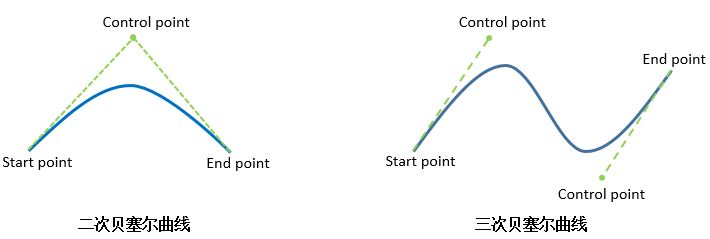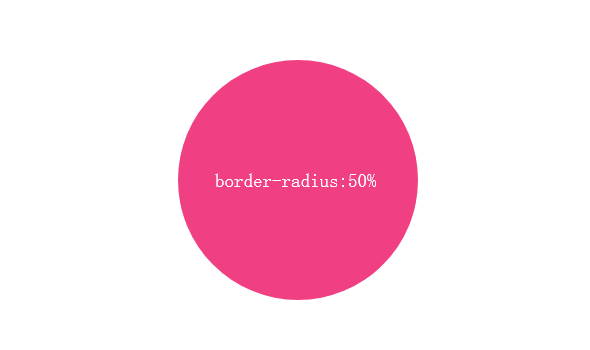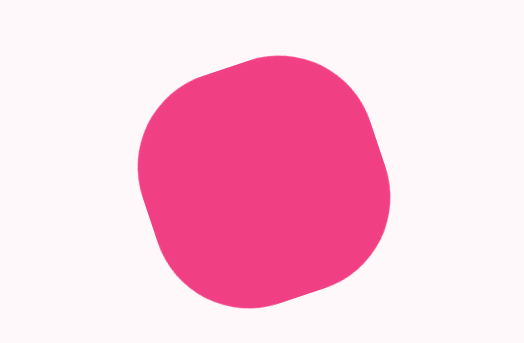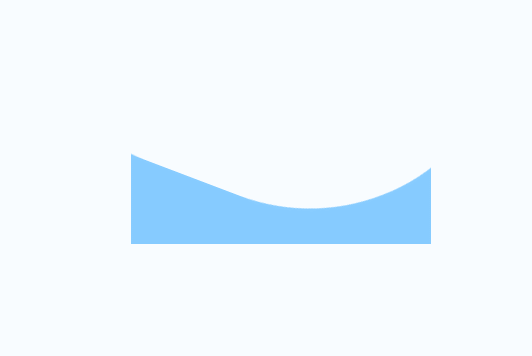前言
一直以来,使用纯 CSS 实现波浪效果都是十分困难的。

因为实现波浪的曲线需要借助贝塞尔曲线。
而使用纯 CSS 的方式,实现贝塞尔曲线,额,暂时是没有很好的方法。
当然,借助其他力量(SVG、CANVAS),是可以很轻松的完成所谓的波浪效果的。
下面先来看看非 CSS 方式实现的波浪效果
SVG 实现波浪效果
借助 SVG ,是很容易画出三次贝塞尔曲线的。

<svg width="200px" height="200px" version="1.1" xmlns="http://www.w3.org/2000/svg">
<text class="liquidFillGaugeText" text-anchor="middle" font-size="42px" transform="translate(100,120)" style="fill: #000">50.0%</text>
<!-- Wave -->
<g id="wave">
<path id="wave-2" fill="rgba(154, 205, 50, .8)" d="M 0 100 C 133.633 85.12 51.54 116.327 200 100 A 95 95 0 0 1 0 100 Z">
<animate dur="5s" repeatCount="indefinite" attributeName="d" attributeType="XML" values="M0 100 C90 28, 92 179, 200 100 A95 95 0 0 1 0 100 Z;
M0 100 C145 100, 41 100, 200 100 A95 95 0 0 1 0 100 Z;
M0 100 C90 28, 92 179, 200 100 A95 95 0 0 1 0 100 Z"></animate>
</path>
</g>
<circle cx="100" cy="100" r="80" stroke-width="10" stroke="white" fill="transparent"></circle>
<circle cx="100" cy="100" r="90" stroke-width="20" stroke="yellowgreen" fill="none" class="percentage-pie-svg"></circle>
</svg>
可以复制上方代码至在线coding, 查看效果。
画出三次贝塞尔曲线的核心在于 <path id="wave-2" fill="rgba(154, 205, 50, .8)" d="M 0 100 C 133.633 85.12 51.54 116.327 200 100 A 95 95 0 0 1 0 100 Z"> 这一段。感兴趣的可以自行去研究研究。
canvas 实现波浪效果
使用 canvas 实现波浪效果的原理与 SVG 一样,都是利用路径绘制出三次贝塞尔曲线并赋予动画效果。

$(function() {
let canvas = $("canvas");
let ctx = canvas[0].getContext('2d');
let radians = (Math.PI / 180) * 180;
let startTime = Date.now();
let time = 2000;
let clockwise = 1;
let cp1x, cp1y, cp2x, cp2y;
// 初始状态
// ctx.bezierCurveTo(90, 28, 92, 179, 200, 100);
// 末尾状态
// ctx.bezierCurveTo(145, 100, 41, 100, 200, 100);
requestAnimationFrame(function waveDraw() {
let t = Math.min(1.0, (Date.now() - startTime) / time);
if(clockwise) {
cp1x = 90 + (55 * t);
cp1y = 28 + (72 * t);
cp2x = 92 - (51 * t);
cp2y = 179 - (79 * t);
} else {
cp1x = 145 - (55 * t);
cp1y = 100 - (72 * t);
cp2x = 41 + (51 * t);
cp2y = 100 + (79 * t);
}
ctx.clearRect(0, 0, 200, 200);
ctx.beginPath();
ctx.moveTo(0, 100);
// 绘制三次贝塞尔曲线
ctx.bezierCurveTo(cp1x, cp1y, cp2x, cp2y, 200, 100);
// 绘制圆弧
ctx.arc(100, 100, 100, 0, radians, 0);
ctx.fillStyle = "rgba(154, 205, 50, .8)";
ctx.fill();
ctx.save();
if( t == 1 ) {
startTime = Date.now();
clockwise = !clockwise;
}
requestAnimationFrame(waveDraw);
});
})
可以复制上方代码至在线coding, 查看效果。
主要是利用了动态绘制 ctx.bezierCurveTo() 三次贝塞尔曲线实现波浪的运动效果,感兴趣的可以自行研究。
CSS实现波浪效果
最开始不是说css不能实现吗?是,我们没有办法直接绘制出三次贝塞尔曲线,但是我们可以利用一些讨巧的方法,模拟达到波浪运动时的效果,下面来看看这种方法。
原理
原理十分简单,我们都知道,一个正方形,给它添加 border-radius: 50%,将会得到一个圆形。

width: 240px;
height: 240px;
background: #f13f84;
border-radius: 50%;
好的,如果 border-radius 没到 50%,但是接近 50% ,我们会得到一个这样的图形(注意边角,整个图形给人的感觉是有点圆,却不是很圆。)

width: 240px;
height: 240px;
background: #f13f84;
border-radius: 40%;
好的,那整这么个图形又有什么用?还能变出波浪来不成?
我们让上面这个图形滚动起来(rotate) ,看看效果:

@keyframes rotate{
from{transform: rotate(0deg)}
to{transform: rotate(359deg)}
}
.ripple{
width: 240px;
height: 240px;
background: #f13f84;
border-radius: 40%;
animation: rotate 3s linear infinite;
}
可能很多人看到这里还没懂旋转起来的意图,仔细盯着一边看,是会有类似波浪的起伏效果的。
而我们的目的,就是要借助这个动态变换的起伏动画,模拟制造出类似波浪的效果。
实现
当然,这里看到是全景实现图,所以感觉并不明显,OK,让我们用一个个例子看看具体实现起来能达到什么样的效果。
我们利用上面原理可以做到的一种波浪运动背景效果图:

后面漂浮的波浪效果,其实就是利用了上面的 border-radius: 40% 的椭圆形,只是放大了很多倍,视野之外的图形都 是隐藏的 ,只留下了一条边的视野,并且增加了一些相应的transform 变换。
可能有部分同学,还存在疑问,OK,那我们把上面的效果隐藏部分显示处理,将视野之外的动画也补齐,那么其实生成波浪的原理是这样的:

图中的红色框就是我们实际的视野范围。
值得注意的是,要看到,这里我们生成波浪,并不是利用旋转的椭圆本身,而是利用它去切割背景,产生波浪的效果。
完整代码如下:
<!DOCTYPE html>
<html>
<head>
<title>Web秀</title>
<meta name="name" content="Javan" />
<style>
body,html{
width: 100%;
height: 100%;
}
@keyframes rotate{
from{transform: rotate(0deg)}
to{transform: rotate(359deg)}
}
.water{
background: #86cbff;
margin-top: 200px;
position: relative;
height: 350px;
width: 300px;
margin-left: 200px;
}
.ripple{
position: absolute;
width: 500px;
height: 500px;
background: #fff;
border-radius: 40%;
animation: rotate 5s linear infinite;
margin-top: -200px;
margin-left: -100px;
}
</style>
</head>
<body>
<div class="water">
<div class="ripple"></div>
</div>
</body>
</html>


